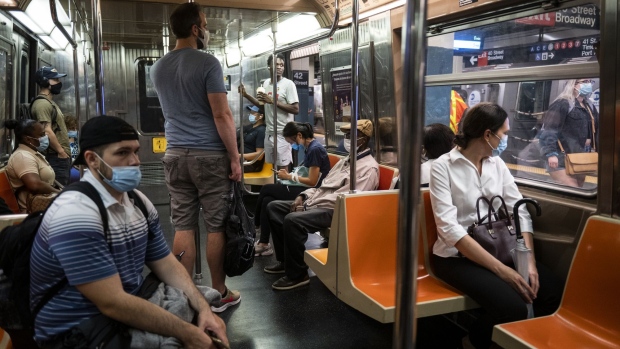May 23, 2022
N.Y. MTA Ridership Falls 19% Short of Projections Amid Shootings
, Bloomberg News

(Bloomberg) -- New York City’s subway system is carrying fewer riders than expected this year as crime has spiked, including a fatal shooting on Sunday and a violent subway attack last month that shook the city.
There were 414.5 million subway and bus trips taken from January through April, about 99 million less than budgeted, or 19% short of projections, according to data from the Metropolitan Transportation Authority, which operates the city’s subways, buses and commuter rails.
That means less revenue for the MTA, the largest mass-transit operator in the US. Farebox collections on subway, buses and commuter lines totaled $1.17 billion through April 30, $237 million below budget, according to MTA data.
The MTA is able to make up for that loss, so far this year. The agency is spending nearly $300 million less than it anticipated in the first four months of 2022 -- which will help offset the weaker farebox collections -- and revenue from taxes on real estate transactions are coming in better than expected, according to MTA data.
MTA officials have said boosting ridership is the central issue for the transit agency as it faces budget deficits once federal coronavirus aid money runs out. Still, many people have embraced a hybrid work schedule that keeps them at home part of the week while others avoid the subway system because of crime.
A man died Sunday after being shot on a Q train heading into Manhattan from Brooklyn. More than two dozen people were injured last month after a man opened fire on a subway train in Brooklyn. A woman in January was pushed to her death at the Times Square subway station.
There were 200 reported assaults on the subway from January through April, the most for that time period since at least 1997, according to MTA data.
Yet weekday subway ridership has been increasing, reaching a pandemic record of 3.6 million on Wednesday. That represents 61% of 2019 levels.
©2022 Bloomberg L.P.






